Pain In The Lower Back, Butt and Legs Isn’t Always Sciatica — Sometimes It’s A Muscle Spasm That Needs Very Different Treatment
Just ask Marianne Richmond, who narrowly escaped having surgery for sciatica that would have failed

You’ve likely heard of sciatica before. The shooting pain that runs down your lower back, buttocks and leg can disrupt your daily routine and linger for months. But if you’ve tried traditional sciatica remedies and the ache still lingers, it could be a case of “pseudo sciatica”. The good news: This sneaky pain trigger is easy to treat with a few simple exercises.
What is pseudo sciatica?
Traditional sciatica is caused by compression or irritation of the sciatic nerve that runs down your back and into your legs. It affects about 40% of folks at some point in their lives. Treatment options typically include home remedies like ice, rest and over-the-counter painkillers. But in severe cases, surgery is needed to help relieve pressure on the sciatic nerve. (Click through to our sister publication to learn if heat or ice is better for sciatica.)
Pseudo sciatica, on the other hand, refers to pain that mimics true sciatica but has other underlying causes. “Common causes include piriformis syndrome, where the sciatic nerve gets compressed by the piriformis muscle in the buttock, or muscle spasms in the glutes,” explains Randa Jaafar, MD, an anesthesiologist and chronic pain management specialist based in New York City. “Pseudo sciatica is less common than true sciatica, but still occurs frequently, especially in active individuals or those with specific muscle imbalances.”
How muscle issues cause sciatica-like pain
One such muscle imbalance could be in the gluteal trio (maximus, medius and minimus) found on each side of the hip in the posterior pelvic girdle. These muscles must work in sync to stabilize your upper body, rotate your hips and enable movement. But if injury, overuse or atrophy prevents just one of these muscles from working properly, the others must step up and work harder, explains Heidi Prather, DO, a specialist in physical medicine and an attending physician at the Hospital for Special Surgery in New York City.
The result: pain in the back, buttocks or legs. In fact, Dr. Prather says up to 25% of this type of pain is incorrectly categorized as spinal or back muscle pain, so it’s improperly treated. Dr. Jaafar agrees, noting mis-treatment is “fairly common, as the treatment approach for muscular issues — common in pseudo sciatica — and nerve compression in the spine can be different. Mistaking one for the other can delay appropriate treatment.”
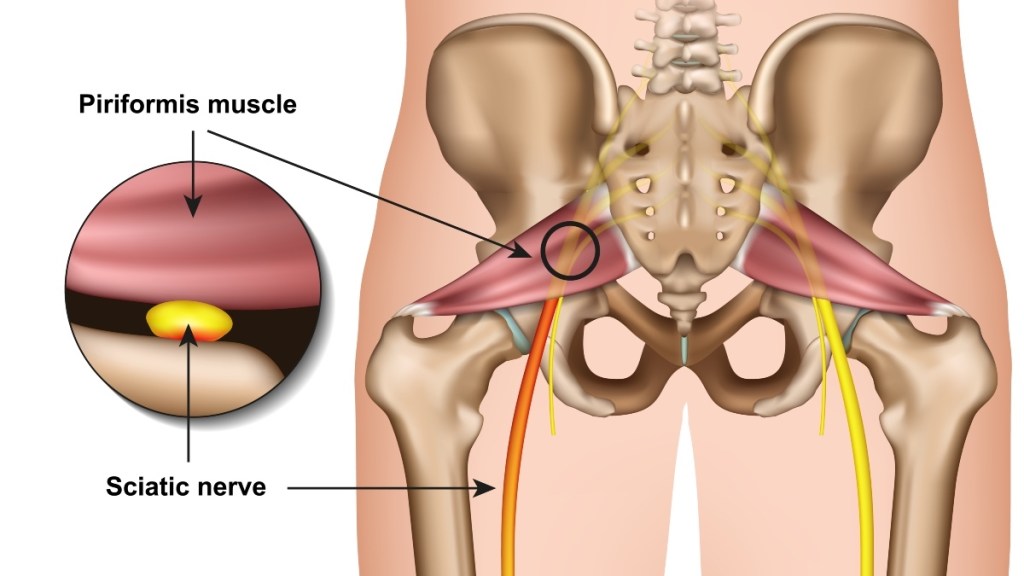
How to tell if you have pseudo sciatica
“Both true sciatica and pseudo sciatica present with similar pain patterns down the leg, making it challenging to differentiate solely based on symptoms,” says Dr. Jaafar. “A significant number of people might be misdiagnosed initially due to the similarity in symptoms with true sciatica.” Sciatica pain can vary in intensity from a dull, tingling ache to a debilitating, electric shock-like sensation that runs from your lower back down your leg. Pseudo sciatica can spur the same discomfort, but you might notice the pain more concentrated in your buttocks. (Click through to learn how to ease lower back pain from walking, how to calm upper back pain between the shoulder blades and to find out how peripheral artery disease can cause leg pain, too.)
If you’re concerned you may have pseudo sciatica caused by pelvic girdle issues, Dr. Prather recommends this test: “If you put your hands on your hips and your pain is below that area, it can be a posterior pelvic girdle problem, which is especially common in women because the pelvis is wider,” she explains. (Click through to discover the benefits of a pelvic floor massage.)
But a full exam is key to a correct diagnosis. “Clinical examination, imaging like MRI, and nerve studies can help differentiate the two,” Dr. Jaafar notes. “True sciatica usually originates from a spinal issue, whereas pseudo sciatica has non-spinal causes.”
Whatever the cause of your pseudo sciatica pain, traditional sciatica treatments may not deliver the relief you’re seeking. Take Marianne Richmond, who had tried every remedy under the sun and was facing surgery to relieve the agony in her lower back and leg. That is, until she discovered the real trigger behind her stubborn pain — and the exercises that cured it!
Pseudo sciatica success story: Marianne Richmond
My pain isn’t getting better, no matter what I do! Marianne Richmond thought to herself as she tried to stand at her desk, frustrated and saddened by how much her back pain and sciatica were negatively affecting her daily life. I wish there was another answer for me besides surgery, but what can I do to relieve my agony?
Marianne had first noticed the persistent pain after a long flight from a yoga retreat in 2019. She brushed it off, blaming it on prolonged sitting, but the pain worsened, radiating from her lower back through her hip and down her leg.
An orthopedist told her she had sciatica and lower spine instability. But even with physical therapy, pain medication, chiropractic care, steroid injections, lumbar support pillows, a standing desk and exercise, Marianne was still suffering.
The last straw was her visit to a neurosurgeon, who told her she needed spinal fusion surgery. What if this isn’t the right thing? Marianne worried, her discomfort with her upcoming surgery growing by the day.
Marianne’s surprise diagnosis
Feeling ill at ease, Marianne decided to seek out a yoga class, hoping it would help soothe her worries. While there, she fell into conversation about her surgery woes with a woman who implored her to visit her integrative health practitioner, Justin Dearing, DC. With one drop of hope still left in her heart, Marianne decided she had nothing to lose and made the call.
As soon as she arrived at his office and explained her situation, Marianne was overwhelmed to hear Dr. Dearing’s findings. He believed her problem was not in her spine at all — in fact, he was quite sure it was her gluteus minimus muscle in her buttocks likely in spasm, sending the radiating pain down her leg. As he explained, it is common for the gluteus minimus trigger points that affect the calf and outside ankle to be misinterpreted as sciatic pain.
In that instant, Marianne felt a big “yes!” in her heart. After all, she’d insisted that the pain she was experiencing was more in her behind than her back, and finally, a doctor had affirmed it.
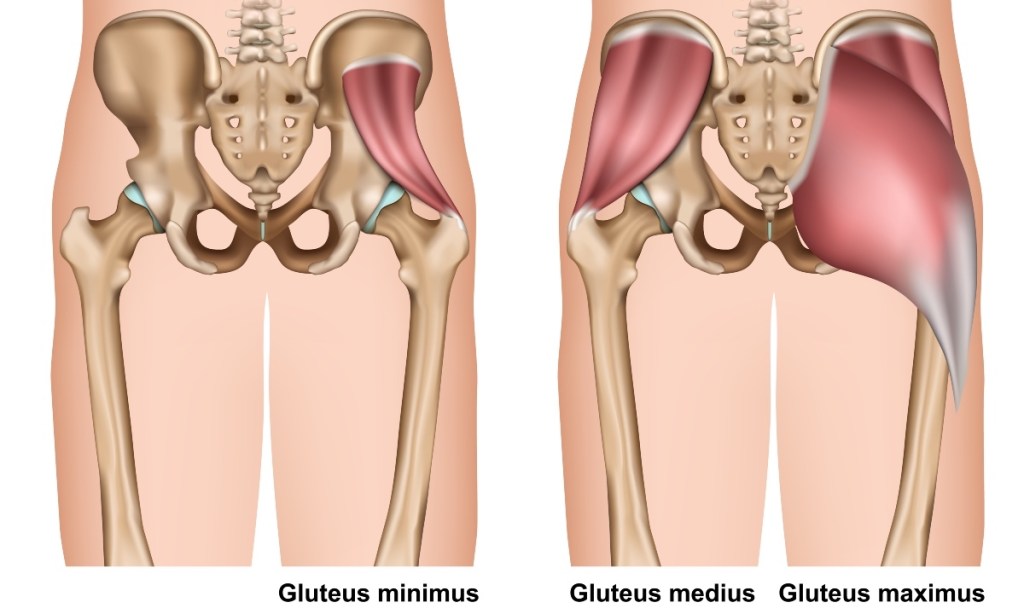
How Marianne found relief with simple exercises
Dr. Dearing taught her exercises that she could do at home that would target the release of the muscle and strengthen Marianne’s glutes and core. These exercises included things like “clamshells,” “fire hydrants” and side planks, all of which were available to learn by searching the stretch on YouTube.
Reinspired by the initial relief she felt, Marianne canceled her surgery and asked her yoga studio about their offerings for more core strengthening. When sharing the exercises that she was doing at home, the owner exclaimed, “We do those in Pilates class!” Thrilled, Marianne decided to try that, too.
When she began, she could barely hold a forearm plank. But within only two months, Marianne grew stronger, and best of all, felt so much better. In fact, she could see and feel progress as her core, glutes and back strengthened. Her suffering had greatly diminished, and six months later, she was completely pain-free!
“Now I can do other activities I love again, like yoga, running and biking, without pain!” Marianne cheers. “Not only is my pain gone for good, but these stretching exercises changed my life!”
The top three exercises for pseudo sciatica
These beginner-friendly moves that helped Marianne can be done from the comfort of home with no special equipment required. (Tip: Click through to see more of Dr. Dearing’s tips for lower back pain relief.)
Glute bridge exercise for pseudo sciatica
Lie on your back with your knees bent and feet firmly planted on the floor, about hip-width apart. Your arms should be at your sides (palms down) and your heels should be about 6 to 8″ from your glutes. Squeeze your glutes as you lift your hips up toward the ceiling, avoiding arching your back. You want to try to create a straight line from your knee to your hip to your shoulder. Hold for a few seconds, then slowly lower your hips back to the floor. Repeat 10 to 20 times.
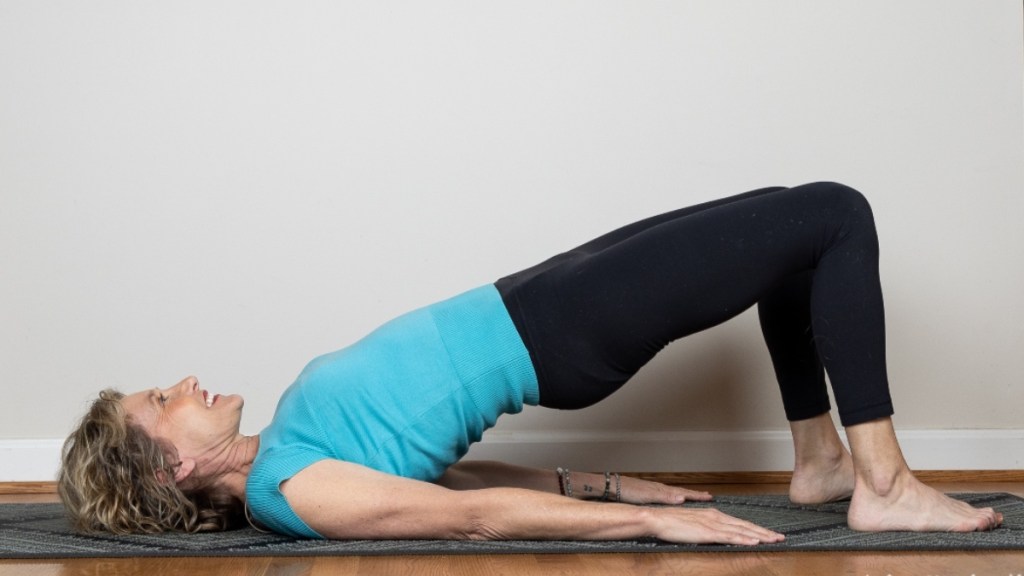
Clamshell exercise for pseudo sciatica
Lie on your side, keeping your knees bent at a 45-degree angle and your legs stacked on top of one another. Rest your head your hand, then raise your upper leg while your bottom leg stays on the floor. Be careful not to shift your hips forward or backward. Hold for a few seconds, then slowly lower your leg back to the floor. Repeat 10 times, then switch to your opposite side and repeat another 10 reps.
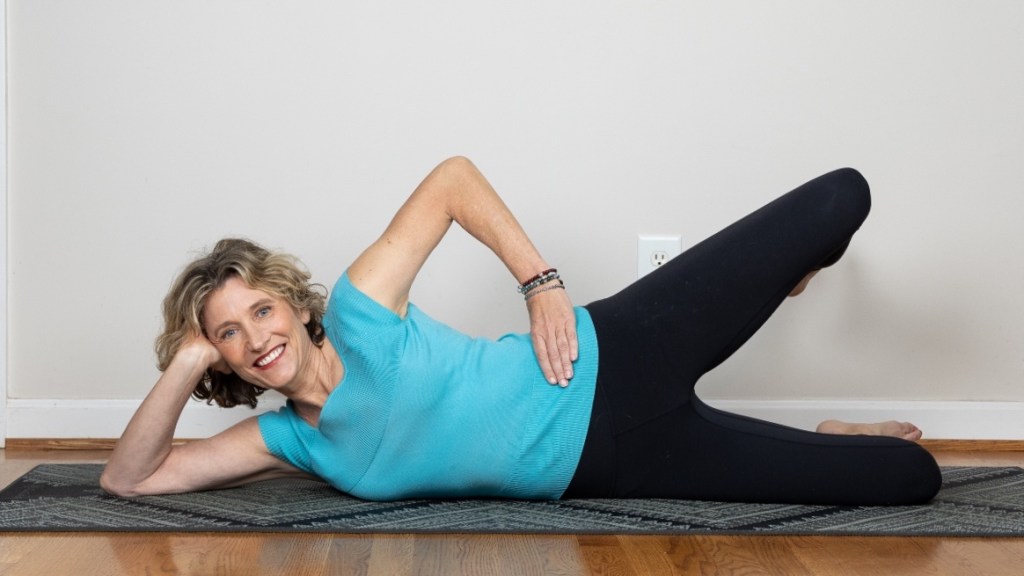
Fire hydrant exercise for pseudo sciatica
Start in a “tabletop” position, your hands and knees on the floor and your back straight. Your hands should be directly below your shoulders, and your knees should be below your hips. With your knee still bent, lift one leg out to the side and away from your body at a 45-degree angle. Hold for a few seconds, then slowly lower your leg back down to the floor. Repeat 10 times, then switch to your opposite side and repeat another 10 reps.
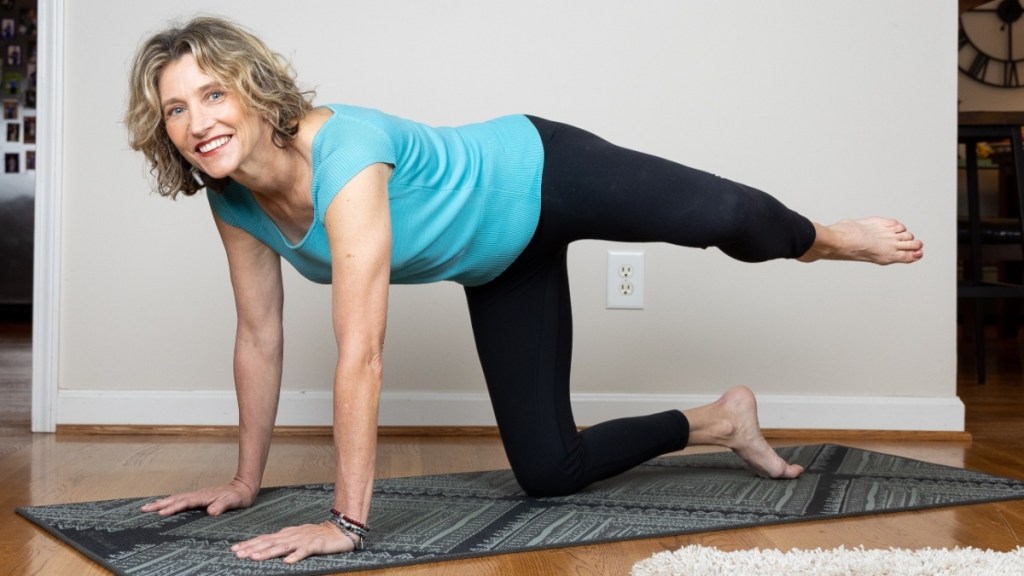
Suffering from true sciatica pain? Read on for natural ways to ease the ache:
Heat or Ice for Sciatica? Physical Therapy Pros Say Both in *This* Order + The ‘Flossing’ That Dials Down Pain by 61%
The Best Foods to Ease Sciatica Pain — And Which Ones Can Make It Worse
3 Easy to Follow Sciatica Exercises That Will Help Soothe Your Aches and Pains

















